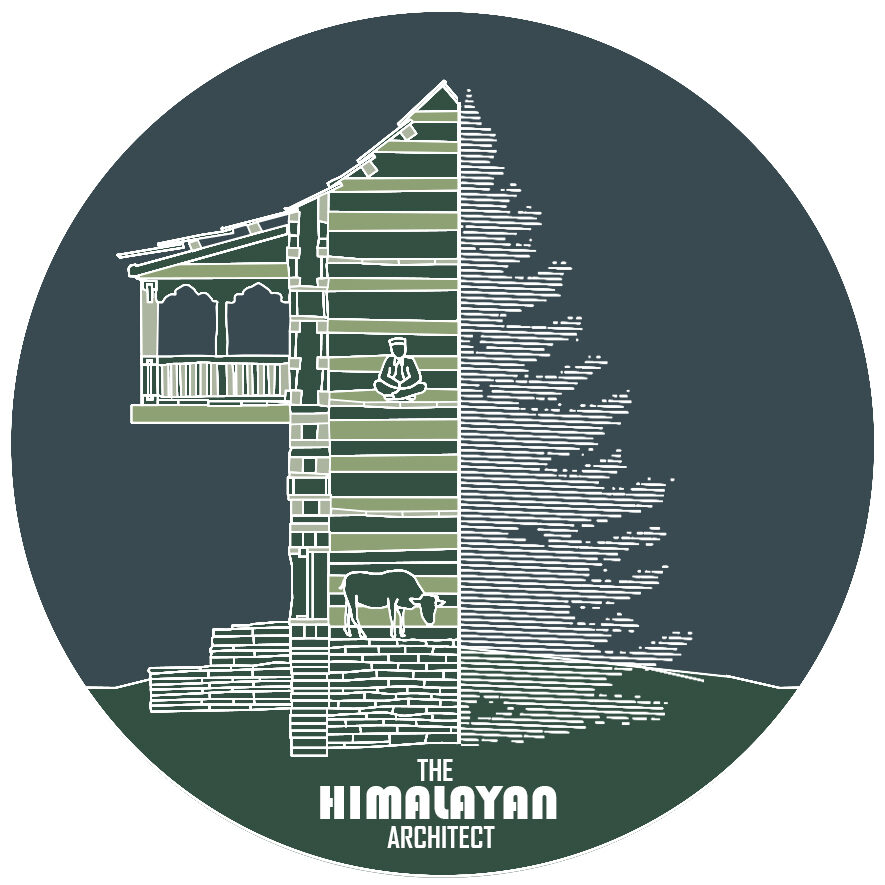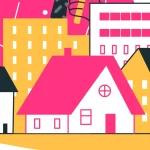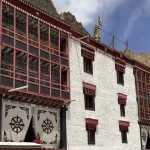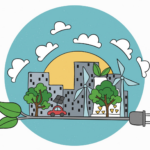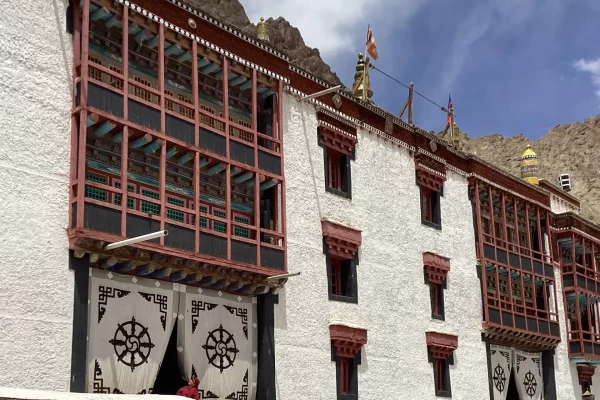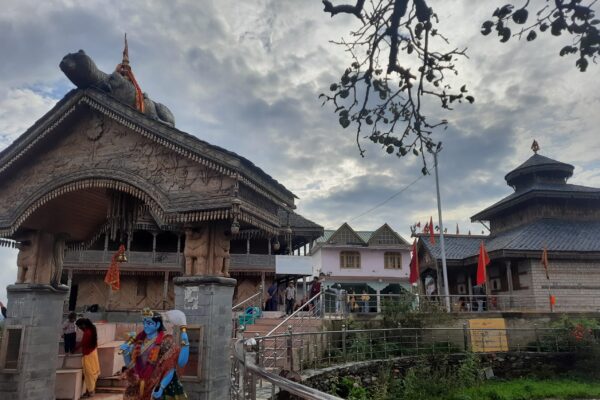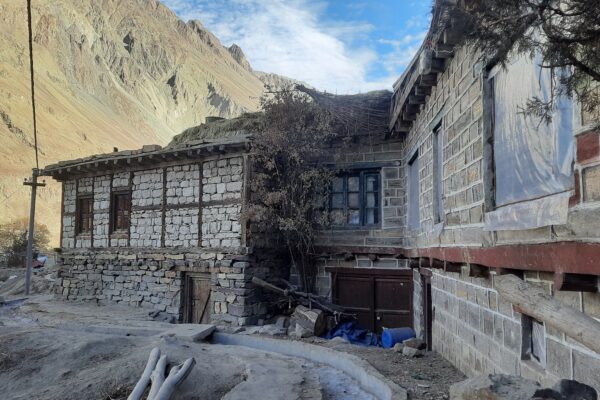-
INTRODUCTION:
Shey is also known as the ancient capital of Ladakh and the remains of the ancient castle are still remaining at the upper ridge of this hillock. Nestled in the picturesque Indus Valley, Shey Palace stands as a symbol of the region’s rich heritage and architectural brilliance. Perched atop a hill, this old palace preserves the legacy of Ladakh’s regal past while providing stunning views of the surrounding countryside. Read the full blog, Shey: Ancient Architectural Palace and Shrine to know about Shey Palace in detail.
In the past, Ladakhi royal family lived in the palace. A significant religious and cultural hub, the Shey Monastery is part of the palace complex. The palace offers views of the Zanskar mountain to the west and the Thiksey Gompa to the south. Below the castle and gompa are hundreds of chortens of all sizes. The Ladakhi kings and queens showed interest in Shey through these chortens.
LOCATION OF PALACE:
Palace is approximately 15 kilometers from Leh city in Ladakh, but the historically Shey’s strategic location was chosen because it was close to the rich Indus river, which was perfect for agriculture and offered a commanding view of the trade routes that passed through Ladakh.
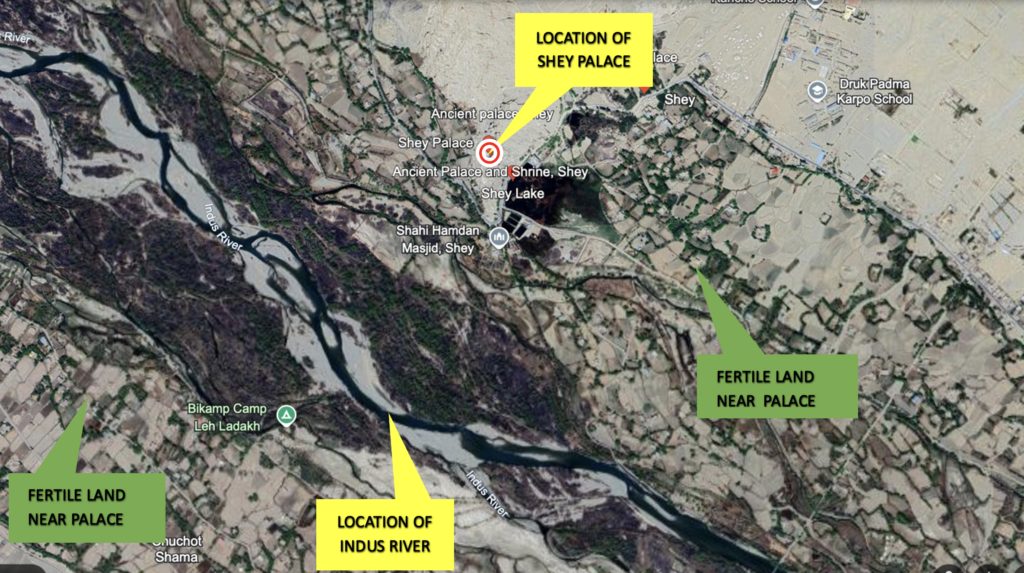
Picture Credits: Google Earth
HISTORICAL BACKGROUND:
Shey Palace was established in the 17th century by King Deldan Namgyal, also known as Lhachen Palgyigon, who was one of the most prominent rulers of the Namgyal dynasty. The palace served as the royal residence until Leh Palace was constructed later in the same century.
The palace is also associated with deep spiritual significance, housing the largest Shakyamuni Buddha statue in Ladakh, which was installed by King Deldan Namgyal in memory of his deceased father. Shey Palace thus serves as both a political and religious hub in Ladakh’s history. The royal family shifted to Stok Palace in 1834 after the Dogra invasion in Ladakh.
SHEY: ANCIENT ARCHITECTURAL PALACE AND SHRINE
ARCHITECTURAL PLANNIG:
Shey Palace is an impressive five storied building on a L-shaped plan built in traditional Ladakhi and Tibetan architecture, harmoniously blending with the rugged natural surroundings. The architectural design reflects both the functional needs and the spiritual aspirations of the Namgyal dynasty.
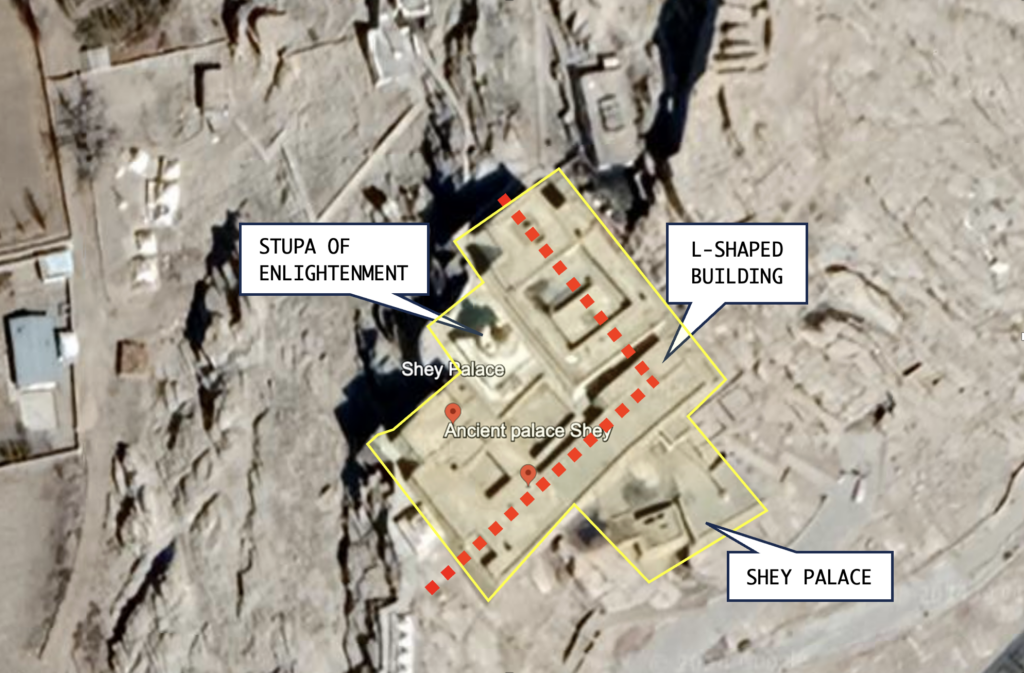
The palace façade facing east is pierced with number of windows including large overhanging balconies and the main entrance porch. As per past time the view of the palace was reflected in the pond at the base of the hill.
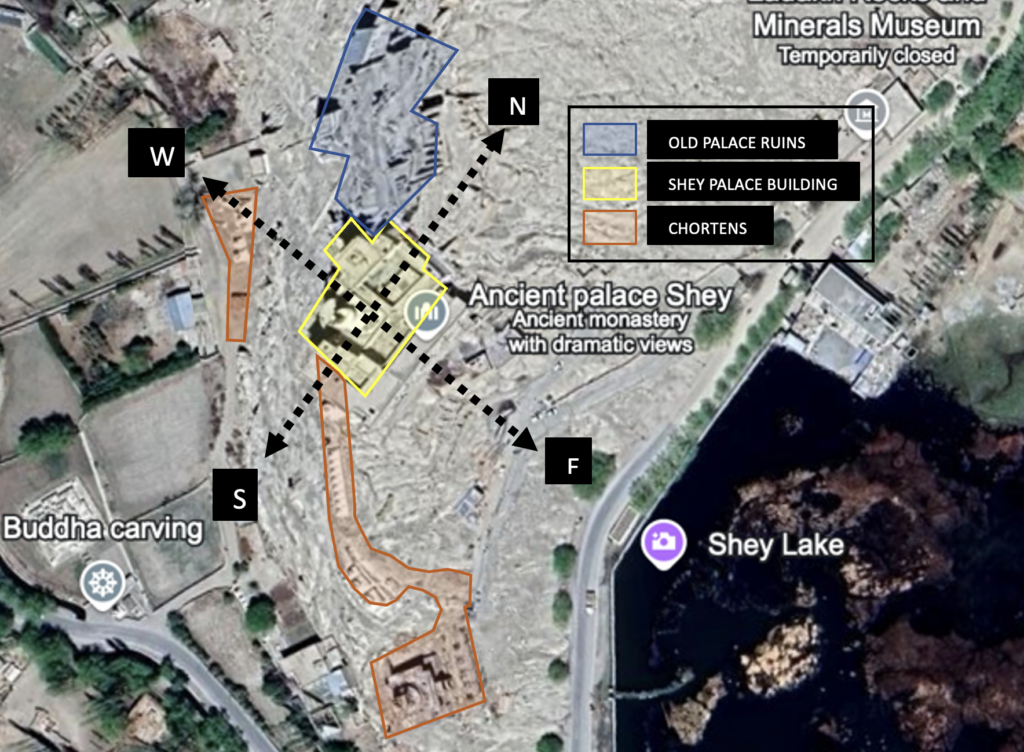
The lower levels of the palace are built in stone masonry and sundried mud bricks have been used in the upper levels. Horizontal timber have been used in the walls at different intervals probably to prevent vertical cracks.
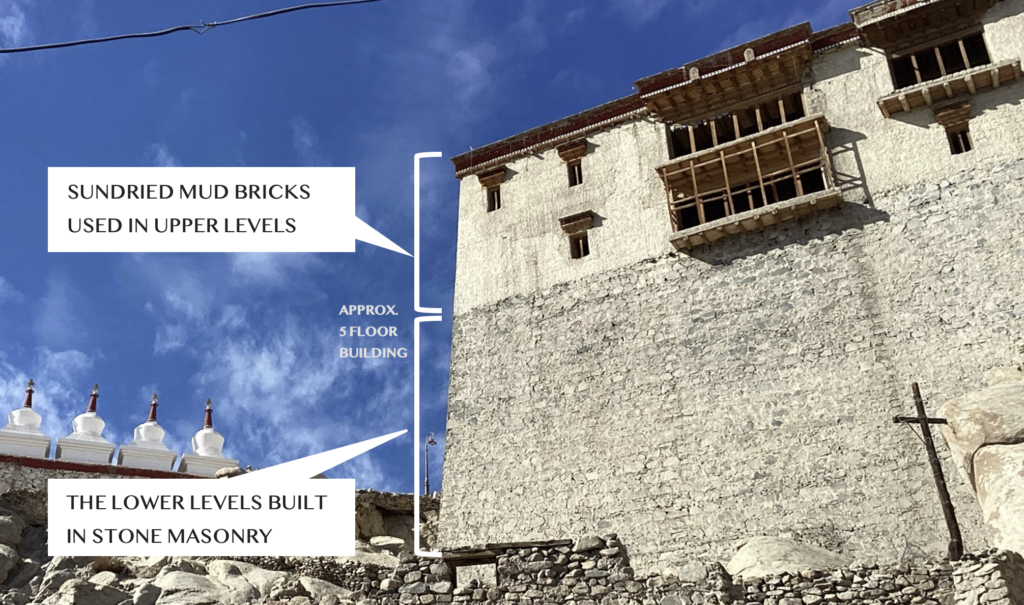
ARCHITECTURAL DESIGN:
The Multi-Tiered Structure:
The palace is a multi-story structure whose levels have been thoughtfully graded to match the hill’s slope. In addition to improving the visual appeal, this tiered structure guarantees stability on the uneven ground.
Spatial Organization:
The palace’s arrangement is hierarchical, with the royal family’s private chambers and top floors designated for them. The elaborate woodwork and murals on these floors represent the dynasty’s strength and spiritual goals. The lower levels housed the palace personnel and served as administrative spaces.
The Buddha Hall:
After entering the central courtyard located on the second storey of the gompa, the 12-meter high image of the Buddha is found in the room to one’s right. The Buddha Hall, which contains the imposing two-story Shakyamuni Buddha statue, is Shey Palace’s most recognizable feature. The Buddha is worked of copper sheets gilded with gold. This is the biggest metal statue in the region and was the largest Buddha statue of any type in Ladakh until Thiksey installed a 15-meter tall Buddha made of clay in 1970. Frescoes that portray images from Buddhist texts cover the hall’s inside, adding to its hallowed atmosphere. This place’s architecture aims to inspire wonder and reverence.
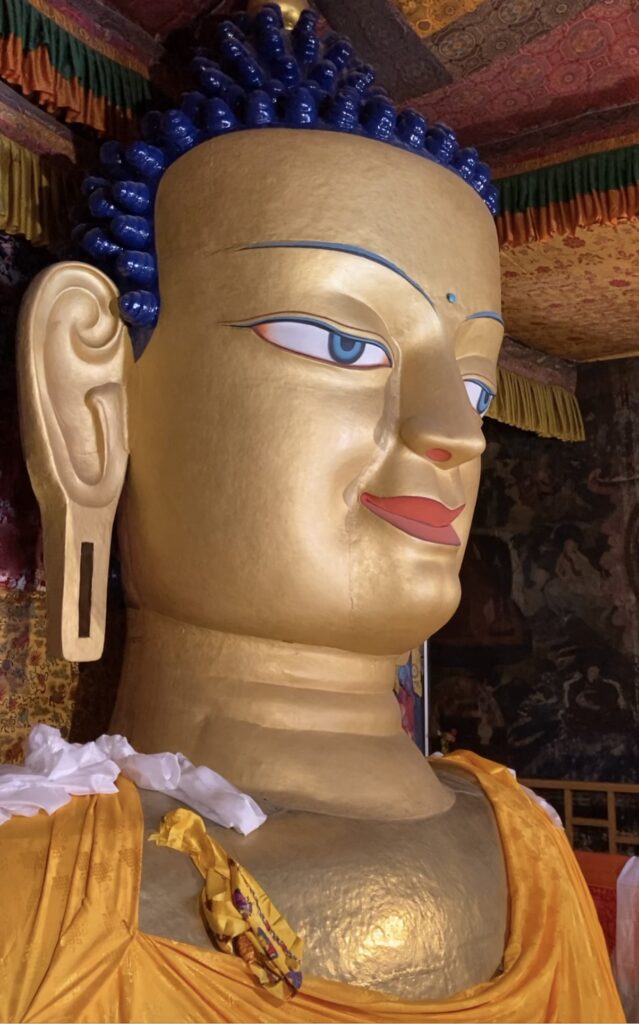
Courtyard and open spaces:
Large courtyards and open terraces are features of the palace that are used for both ceremonial and functional purposes. Religious rites, cultural events, and royal meetings took place in these locations. The palace’s relationship with nature is emphasized by the expansive views of the Indus Valley that the terraces offer.
Stupa of Enlightenment:
The palace complex also has the largest Changchub Chhorten (Stupa of Enlightenment) in Ladakh region.
ARCHITECTURAL FEATURES:
Doors & Windows:
Shey Palace’s windows and doors have been carefully planned with attention to detail. Wooden frames with elaborate carvings that frequently show geometric and floral motifs are a characteristic of traditional Ladakhi designs. In order to reduce heat loss and provide protection from the strong winds, windows are usually narrow and recessed. Wooden latticework adorns several windows, providing privacy yet letting light in. The doors are sturdy, constructed from thick wood for increased strength and visual appeal.
Defensive Elements:
Climatic Adaptations:
Symbolic Elements:
The design of Shey Palace is rich in symbolic elements, with the use of colors, patterns, and materials reflecting Buddhist cosmology. The golden gilding on the Buddha statue, for instance, symbolizes enlightenment and prosperity.
MATERIALS USED:
The construction of Shey Palace is a testament to the ingenious use of locally available materials and traditional techniques:
Mud Bricks and Stone:
The walls are constructed using sun-dried mud bricks, which are lightweight yet durable. Stone is extensively used for the foundation and structural stability.
Timber:
Wooden beams and columns provide structural support and flexibility, allowing the building to withstand minor seismic activity.
Roofing:
Flat roofs are made from wooden planks overlaid with mud, which acts as an insulating layer.
Gilding and Artwork:
STRUCTURAL STABILITY:
Shey: Ancient Architectural Palace and shrine, showcases remarkable structural stability, achieved through:
Thick Walls:
Made of layers of stone and sun-dried mud bricks, the palace’s walls are remarkably thick. This offers the structural mass required to withstand lateral stresses in addition to providing insulation against extremely high or low temperatures.
Terraced Design:
The multi-tiered layout of the palace guarantees even weight distribution by adhering to the hill’s natural contours, lowering the chance of collapse due to unstable soil.
Foundation:
The stone foundation serves as a strong base that securely fastens the building to the hill. The usage of stone that is sourced locally guarantees that it blends in with the surrounding landscape.
CULTURAL AND SPIRITUAL IMPORTANCE:
Shey Palace has great spiritual importance and is more than just a historical landmark. Monks and pilgrims from all over the area come to worship and meditate in the monastery inside the palace. An important cultural event in Ladakh, the Shey Doo Lhoo festival is celebrated with tremendous zeal every year to mark the start of the planting season.
One of the main objects of spiritual devotion is the enormous statue of Shakyamuni Buddha. Its calm surroundings encourage people to reflect and feel at peace. The palace is a significant pilgrimage site because of its ties to Ladakh’s Buddhist past.
PRESERVATION AND TOURISM:
Shey Palace’s historical and architectural charms have made it a popular tourist destination today. With restoration projects concentrating on preserving its structural integrity and repairing its paintings and artwork, efforts are being made to conserve this cultural property.
The palace is a popular destination for history buffs and photographers because to its breathtaking views of the Indus Valley. The visitor experience is enhanced by guided excursions, which offer insights into Ladakh’s Buddhist customs and royal past.
CONCLUSION:
One of the best examples of Ladakh’s architectural and cultural heritage is Shey Palace. It is a must-visit location for anybody interested in Ladakh’s beauties because of its unique design, spiritual essence, and historical significance. It continues to evoke wonder and admiration in both residents and tourists as a symbol of Ladakhi tradition
I hope you liked this blog Shey: Ancient Architectural Palace and Shrine, please let me know through your comments. Also share it with other people who are passionate about architecture and design. Contact us in case of any queries and also read my previous blogs related to architecture and travel. Thank you.
